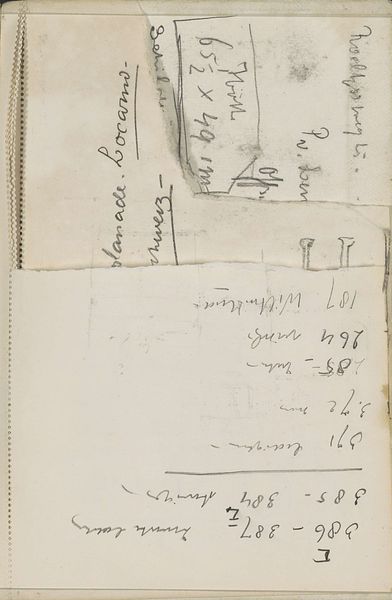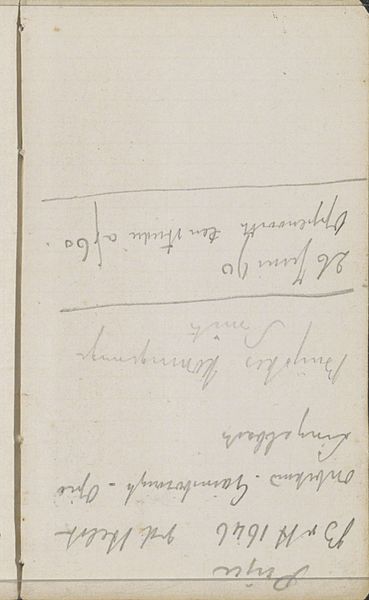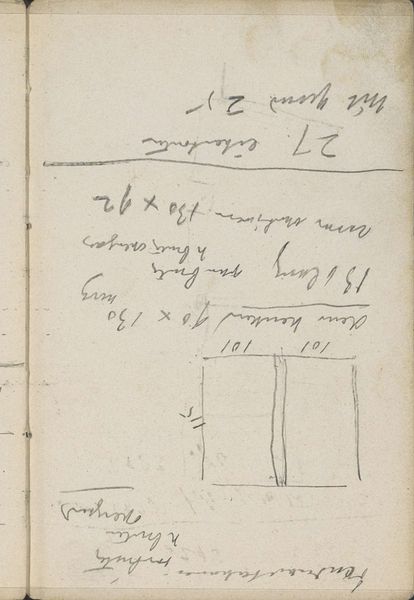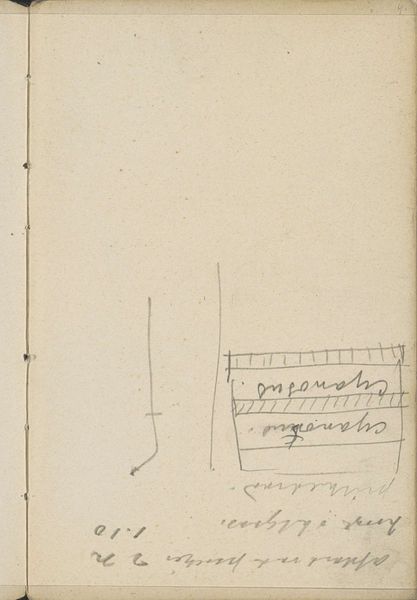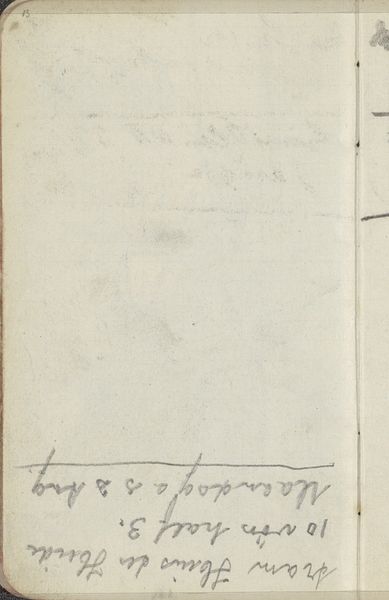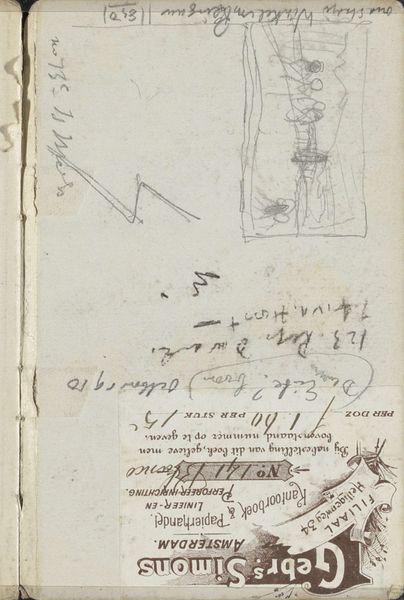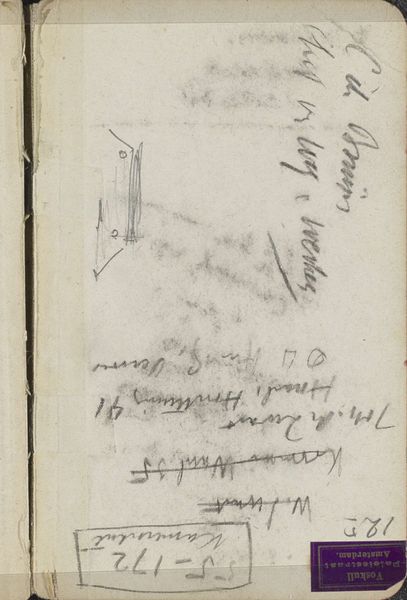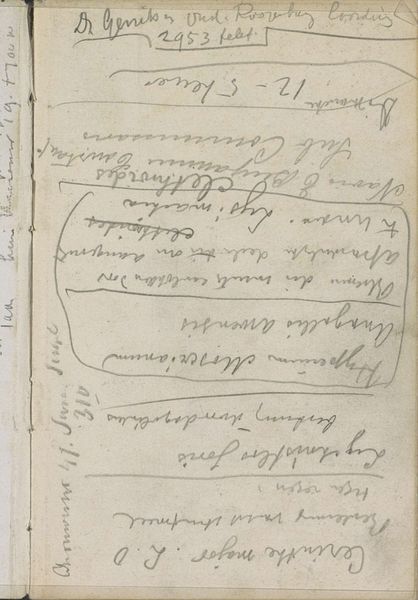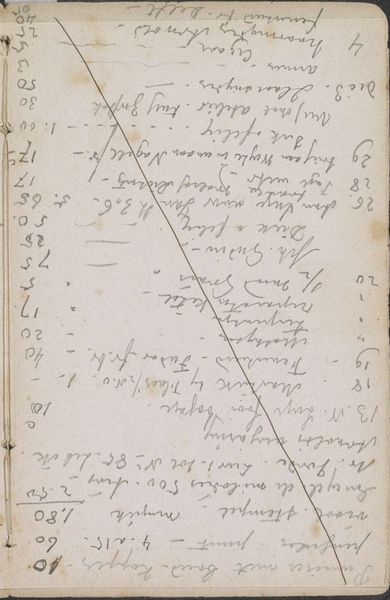
Copyright: Rijks Museum: Open Domain
Curator: Here we have "Studie en annotaties," a page from George Hendrik Breitner's sketchbook, dating back to around 1903. It resides here at the Rijksmuseum. What are your first thoughts? Editor: Immediately, I’m struck by the age of the paper and the density of marks. It has a kind of raw, practical feeling to it, less about aesthetic beauty and more about the tangible work of capturing an idea. It seems less like a work of art, and more a blueprint for the factory or some building to come. Curator: Absolutely, it's like peering directly into the artist’s mind at work. There's a beautiful, fragile quality to these fleeting lines. The landscape, if we can call it that, rendered with such economy. Editor: What interests me is how the artist is working something out with these materials: pencil and paper. There’s writing as well. "Withaal vernis” and "Lerdiet?" Those notes feel so central to the purpose. Do we know anything about the sort of varnish he employed or where this "Lerdiet" could be found? This connects artistic practice to tangible materials and maybe the social and economic aspects that influenced those selections. Curator: It’s tempting to over-romanticize it. He might have just been jotting down things to buy. And that small sketch… It’s evocative; like a ghost of a building against a flat landscape. I suppose one could read so much melancholy in its sparse strokes, or not at all. It's Breitner letting something breathe for a moment. Editor: See, that's where we might differ. It’s crucial to look at these ‘ghosts’ with a critical eye, and recognize how labor and capital inform the very possibility of these drawings. Pencil, paper, sketchbook. Someone manufactured them, sold them, he purchased them, deployed them… this little sketchbook whispers volumes about the material conditions that framed artistic creation during that time. Curator: Well, I'm left feeling it speaks eloquently of a specific artistic perspective. Looking at it from that view does amplify the artistic process, indeed. Editor: And I think considering how the work ties to that context lets us approach what the artwork meant when created, rather than imposing present understandings. A valuable approach!
Comments
No comments
Be the first to comment and join the conversation on the ultimate creative platform.
